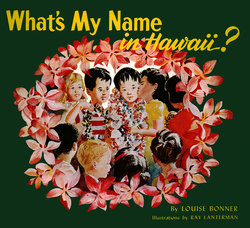Читать книгу What's My Name in Hawaii? - Louise Bonner - Страница 5
На сайте Литреса книга снята с продажи.
ОглавлениеPreface for Parents and Teachers
IN THE older part of Honolulu there is a street only two blocks long called Banyan Street. A huge banyan tree with many long, tough roots hanging from its branches grows right in the middle of the street, and cars entering the street must drive on either side of it. Long ago the city fathers, it is said, would hold meetings in the cool shade under this tree. Today it is used by small boys and some not so small, who hold on to its roots and swing from the roofs of sheds close by. It is best to drive slowly here, for the driver may be surprised to see a boy swinging out in front of his car and back to a roof again!
At the end of Banyan Street is a big, old green building that is called Na Lei Kindergarten and Preschool. It is light and pleasant inside, and has a wonderful playground shaded almost entirely by a huge monkeypod tree. The people who named the school long ago called it Na Lei o Ka Keiki, which means a “lei of children.” A lei is a garland of colorful flowers sewn together.
In Hawaii people put leis around your neck, with a kiss, whenever you are going somewhere, coming from somewhere, or celebrating a birthday or any other happy occasion. The most beautiful leis are made of many different kinds of flowers. Perhaps that is why the school is called a lei of children, because they come from many different racial backgrounds: Hawaiian, Japanese, Chinese, Korean, Filipino, Portuguese, Negro, and Haole (Caucasian) . . But they are all Americans and very proud to be citizens of the 50th State. This story is about one of these children who came from far across the ocean, but now is just another beautiful flower in Na Lei o Ka Keiki.
LOUISE BONNER
